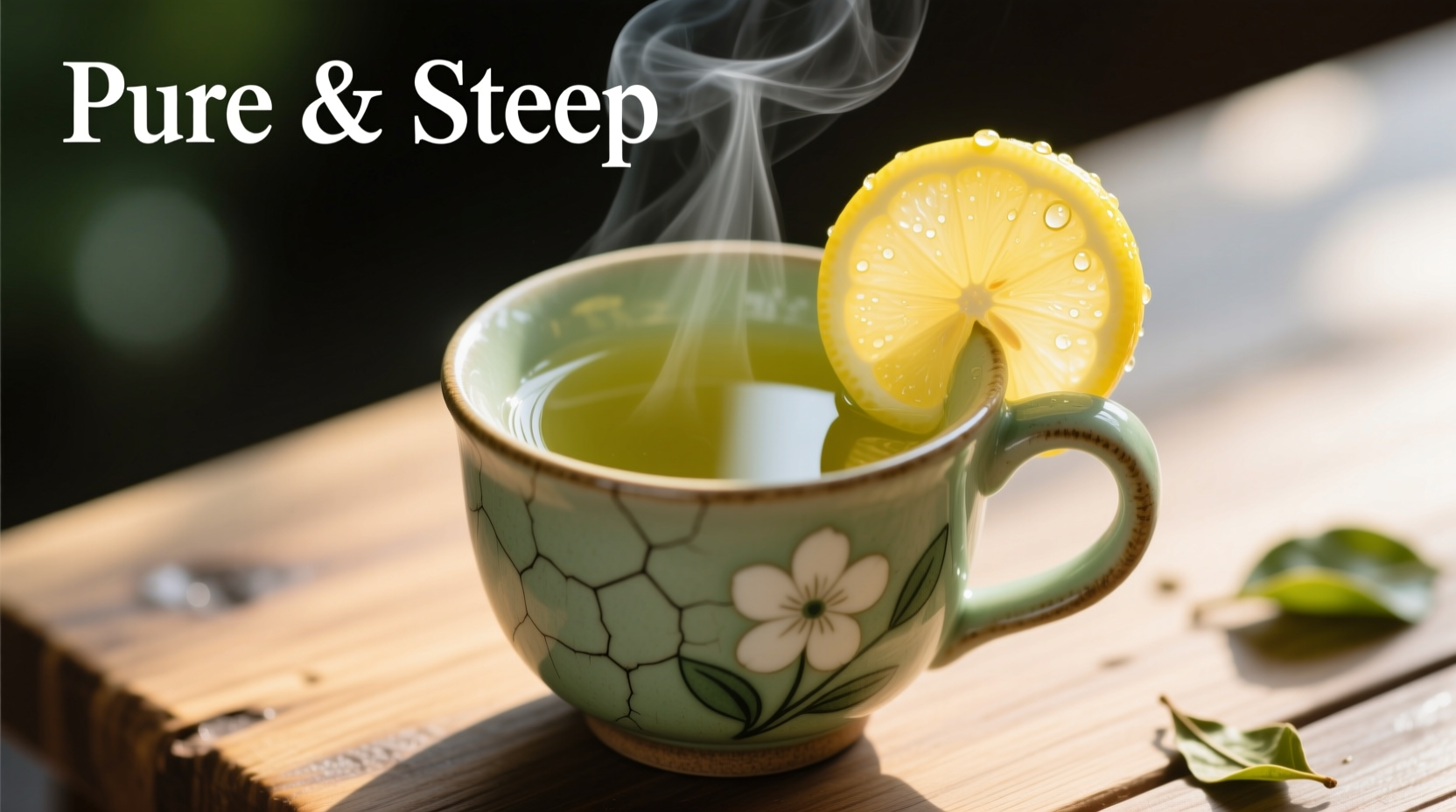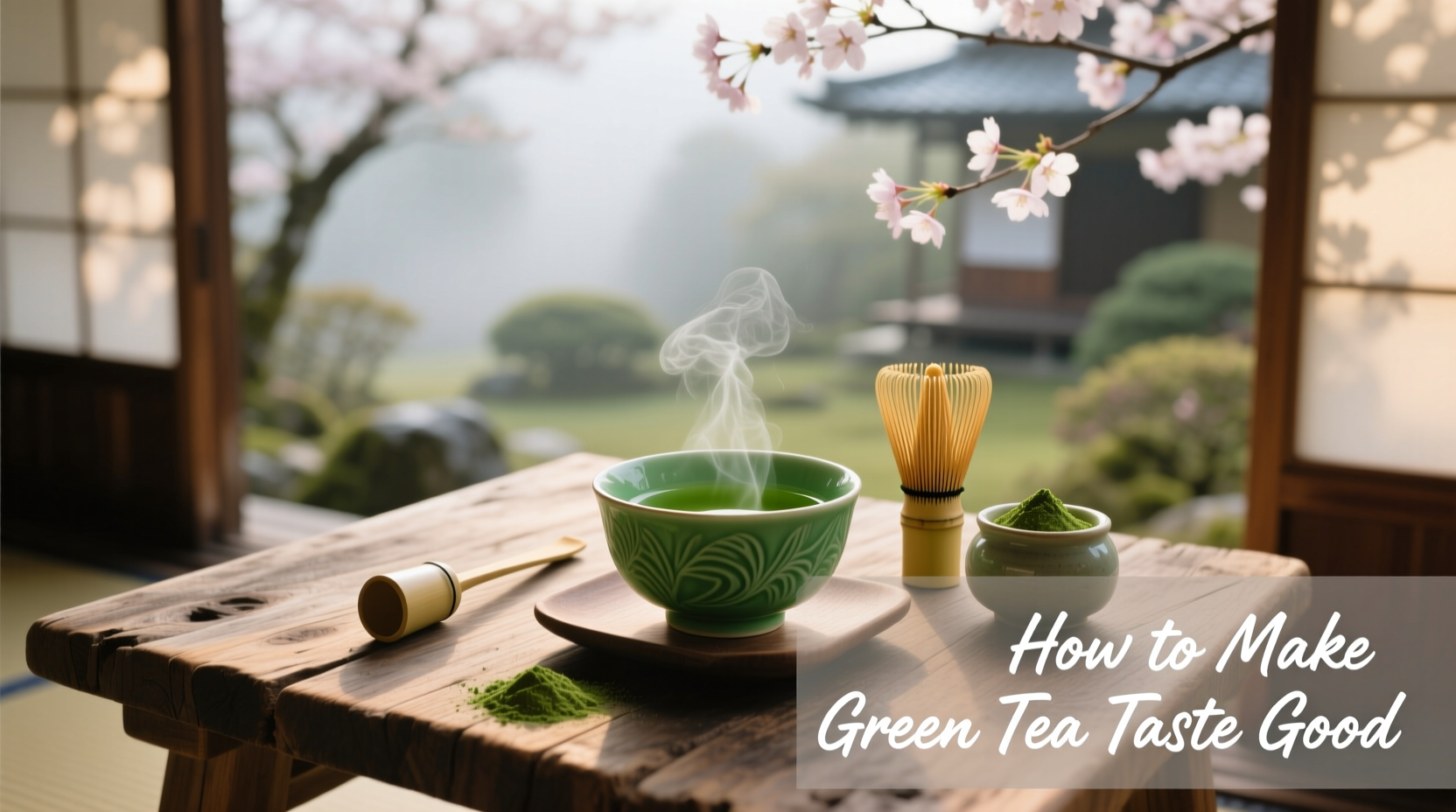Many tea drinkers abandon green tea after experiencing its unpleasant bitterness, not realizing they're likely brewing it incorrectly. As a tea professional with extensive experience in flavor chemistry, I've helped thousands transform their green tea experience through precise temperature control and preparation techniques. The good news is that with a few simple adjustments to your brewing process, you can consistently enjoy smooth, flavorful green tea that highlights its natural sweetness rather than its potential bitterness.
Why Your Green Tea Tastes Bitter (And How to Fix It)
Green tea contains catechins and tannins that become excessively extracted when exposed to water that's too hot or steeped for too long. Unlike black tea, which benefits from boiling water, green tea's delicate leaves scorch at high temperatures, releasing unpleasant bitter compounds. The solution isn't adding sugar to mask the flavor, but rather adjusting your brewing technique to draw out the tea's natural sweetness.
Essential Brewing Parameters for Perfect Green Tea
Understanding your specific green tea variety is crucial, as different types require slightly different preparation methods. This comprehensive guide from the Tea Association of the USA details optimal brewing conditions for various green teas:
| Green Tea Variety | Water Temperature | Steeping Time | Tea-to-Water Ratio |
|---|---|---|---|
| Sencha (Japanese) | 160-170°F (71-77°C) | 1-2 minutes | 1 tsp per 6 oz water |
| Gyokuro (Japanese) | 120-140°F (49-60°C) | 2-3 minutes | 2 tsp per 6 oz water |
| Dragon Well (Chinese) | 170-180°F (77-82°C) | 2-3 minutes | 1.5 tsp per 6 oz water |
| Matcha (Japanese) | 170°F (77°C) | Whisk immediately | 1-2 tsp per 6 oz water |
This temperature precision matters because research published in the Journal of Agricultural and Food Chemistry confirms that water above 185°F (85°C) significantly increases the extraction of bitter-tasting epigallocatechin gallate (EGCG) while diminishing more delicate flavor compounds.
Step-by-Step Brewing Guide for Perfect Flavor
1. Start with Quality Ingredients
Begin with fresh, high-quality loose leaf green tea stored in an airtight container away from light, heat, and moisture. Avoid tea bags containing fine particles and dust, which brew faster and more bitter. For the best results, purchase from reputable tea vendors who provide harvest dates.
2. Perfect Your Water Temperature
Boiling water (212°F/100°C) is the #1 cause of bitter green tea. Instead:
- For electric kettles with temperature control: Set to 170°F (77°C)
- Without temperature control: Boil water, then let it cool for 5-7 minutes
- Pro tip: Add 1-2 oz of room-temperature water to your cup before pouring hot water
3. Master the Steeping Process
Set a timer immediately after adding water to your tea leaves:
- First infusion: 1-2 minutes for most green teas
- Subsequent infusions: Increase by 30 seconds each time
- Remove leaves completely after steeping - don't leave them in the water
4. Enhance Flavor Naturally (Without Sugar)
Before reaching for sweeteners, try these natural flavor enhancers that work with green tea's chemistry:
- Lemon or citrus twist: The citric acid binds with tannins, reducing perceived bitterness while increasing antioxidant availability by up to 18% according to research from the US Department of Agriculture
- Fresh mint or lemongrass: Adds complementary herbal notes without overpowering
- Thin slice of ginger: Complements green tea's vegetal notes and adds subtle warmth
- Cold brewing overnight: Uses time instead of heat for smooth, naturally sweet results

Common Mistakes That Ruin Green Tea Flavor
Avoid these frequent errors that compromise your tea's taste:
Over-Steeping
Even 30 seconds too long can turn delicate tea bitter. Set a visible timer and remove leaves promptly. Green tea continues extracting even after removal from heat.
Poor Water Quality
Chlorinated or hard water masks subtle tea flavors. Use filtered water for best results - the minerals in spring water can actually enhance flavor notes.
Incorrect Tea Storage
Green tea oxidizes quickly. Store in an opaque, airtight container in a cool, dark place. For long-term storage, keep in the freezer. Properly stored green tea maintains peak flavor for 6-12 months.
Troubleshooting Your Green Tea
If Your Tea Tastes Too Bitter
Next time, reduce water temperature by 5-10°F and shorten steeping time by 20-30 seconds. If already brewed, add a small pinch of baking soda (1/16 tsp) to neutralize bitterness without affecting flavor.
If Your Tea Tastes Too Weak
Instead of steeping longer (which causes bitterness), increase the tea-to-water ratio by 25%. For example, use 1.25 tsp instead of 1 tsp per 6 oz water.
If Your Tea Lacks Flavor Complexity
Try a second infusion with slightly hotter water and longer steeping time. High-quality green teas often reveal different flavor notes in subsequent brews.
Advanced Techniques for Tea Enthusiasts
Multiple Infusions Method
High-quality green teas can be infused 2-3 times. With each infusion:
- Increase water temperature by 5-10°F
- Extend steeping time by 30-60 seconds
- Notice how flavor profile evolves from vegetal to nutty to sweet
Cold Brew Mastery
For naturally sweet, smooth tea with 66% less bitterness:
- Combine 2 tsp loose leaf tea with 16 oz cold filtered water
- Refrigerate for 8-12 hours
- Strain and enjoy over ice with a lemon wedge
When to Add Milk (And When Not To)
Traditional Japanese and Chinese green teas generally don't pair well with dairy, which can create unpleasant astringency. However, some robust Chinese green teas like Gunpowder can handle a small splash of plant-based milk. If experimenting, add milk after tea is brewed to prevent protein binding that reduces antioxidant availability.
Creating Your Perfect Green Tea Routine
Develop a consistent ritual that works for your schedule:
- Morning: Lighter Sencha with lemon for gentle caffeine lift
- Afternoon: Dragon Well with a mint leaf for refreshment
- Evening: Cold-brewed Gyokuro for zero bitterness and relaxation
Remember that green tea appreciation develops over time. What tastes bitter initially may reveal nuanced flavors as your palate adjusts. Within 2-3 weeks of proper brewing, most people find they prefer the clean, refreshing taste of correctly prepared green tea without any additions.











 浙公网安备
33010002000092号
浙公网安备
33010002000092号 浙B2-20120091-4
浙B2-20120091-4